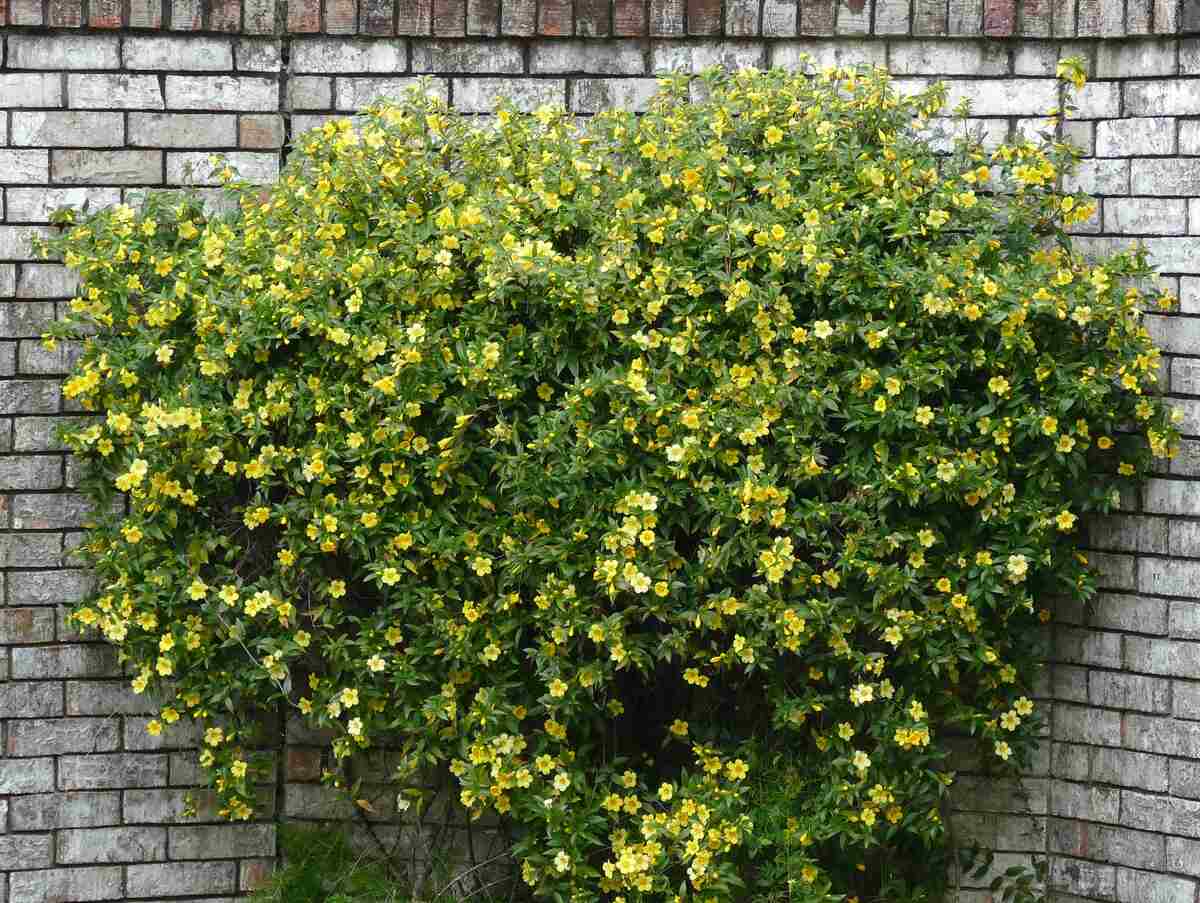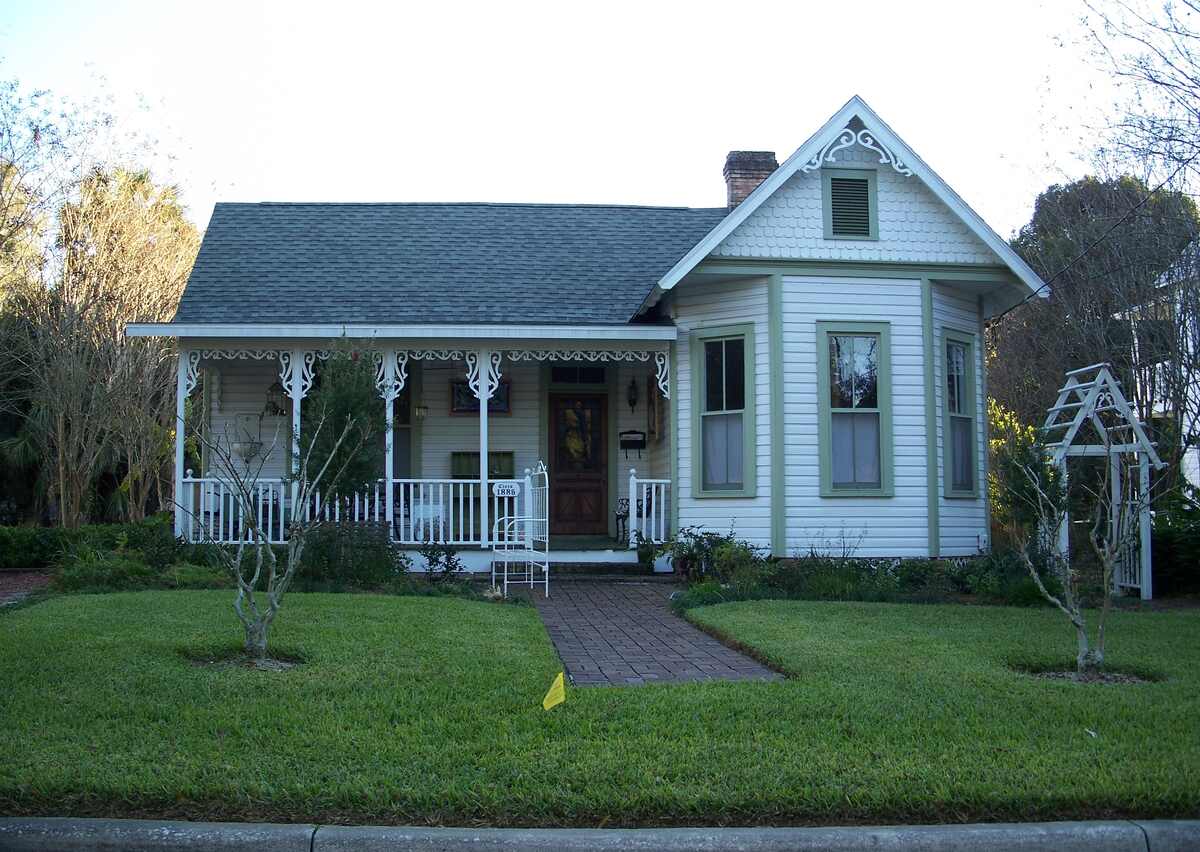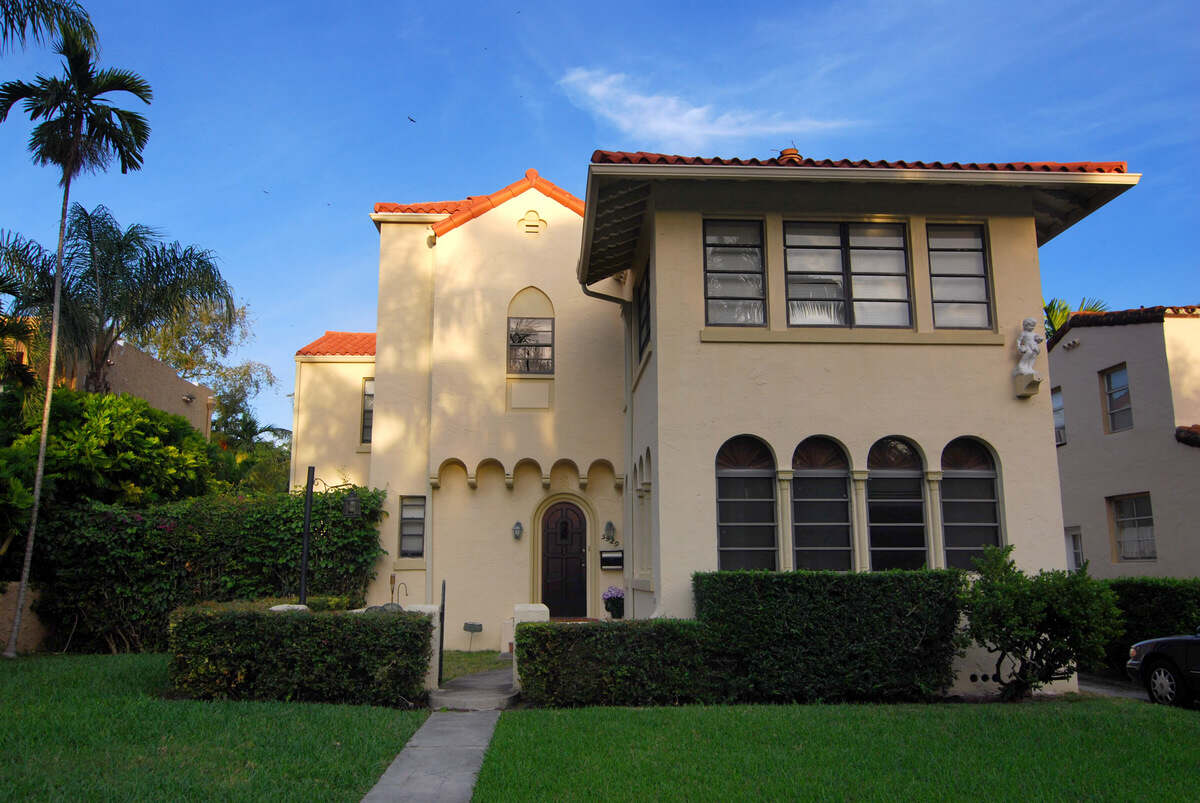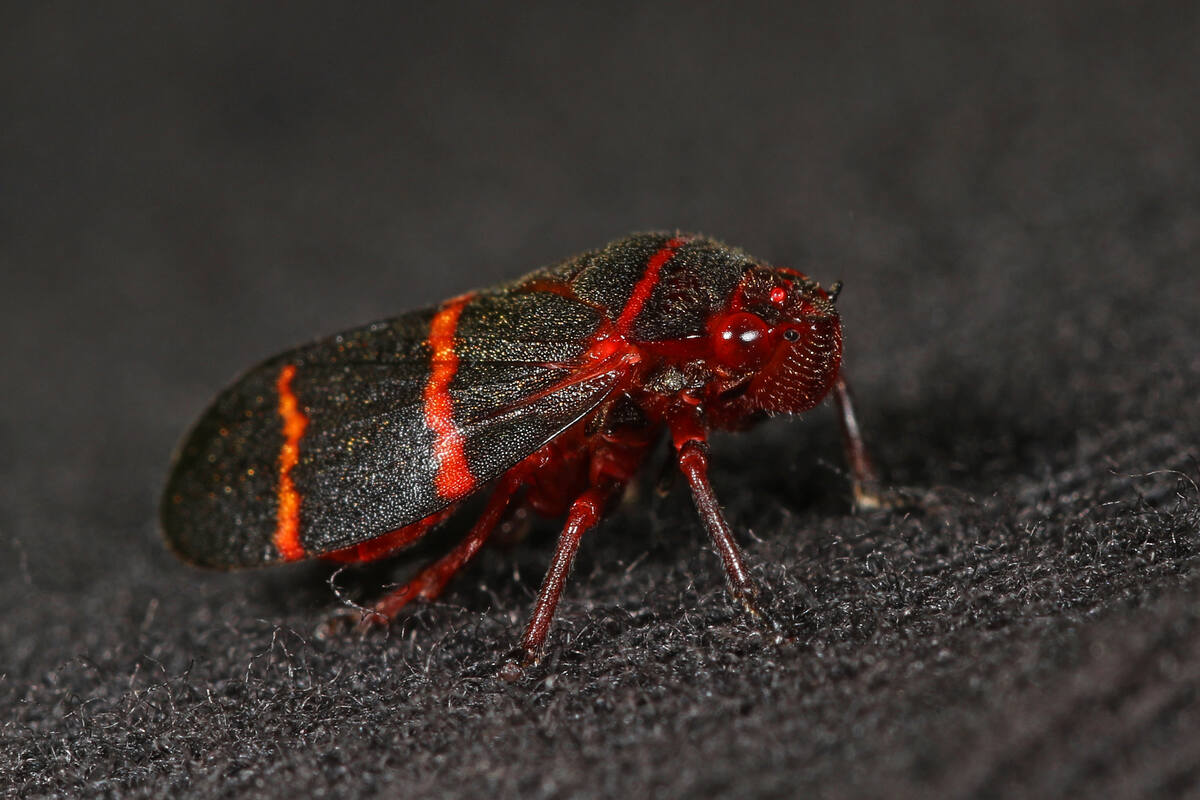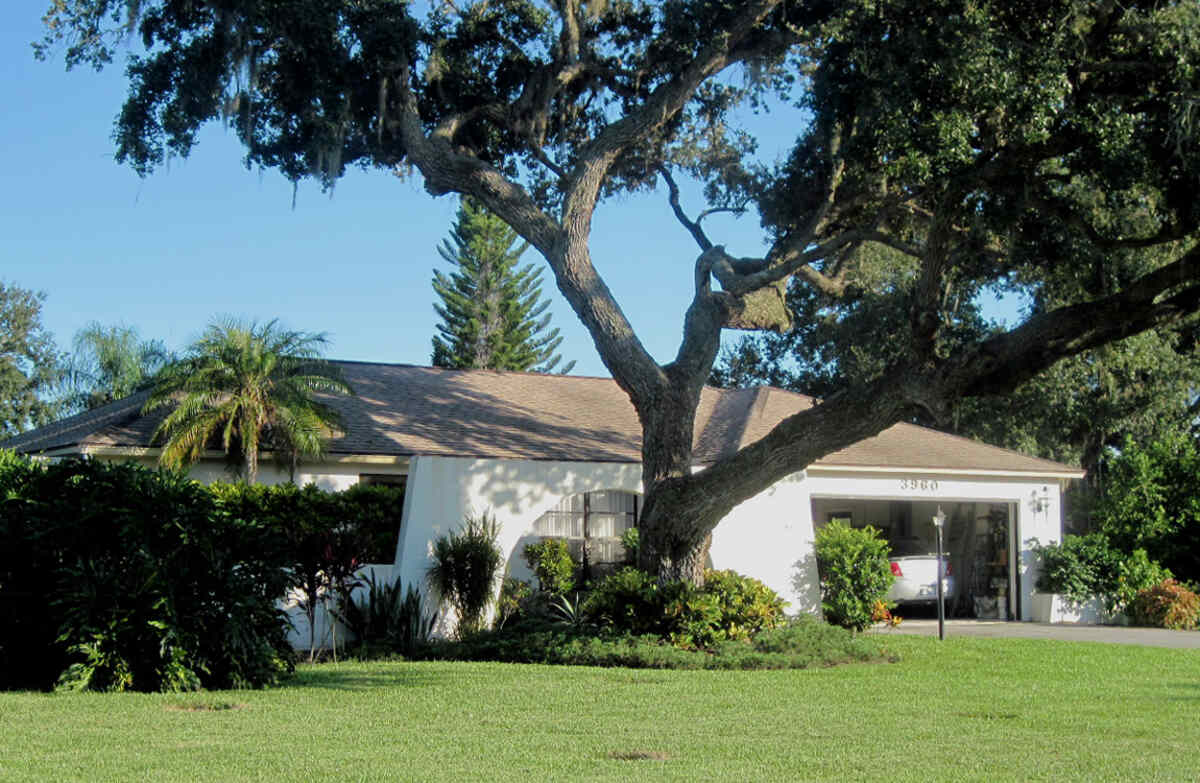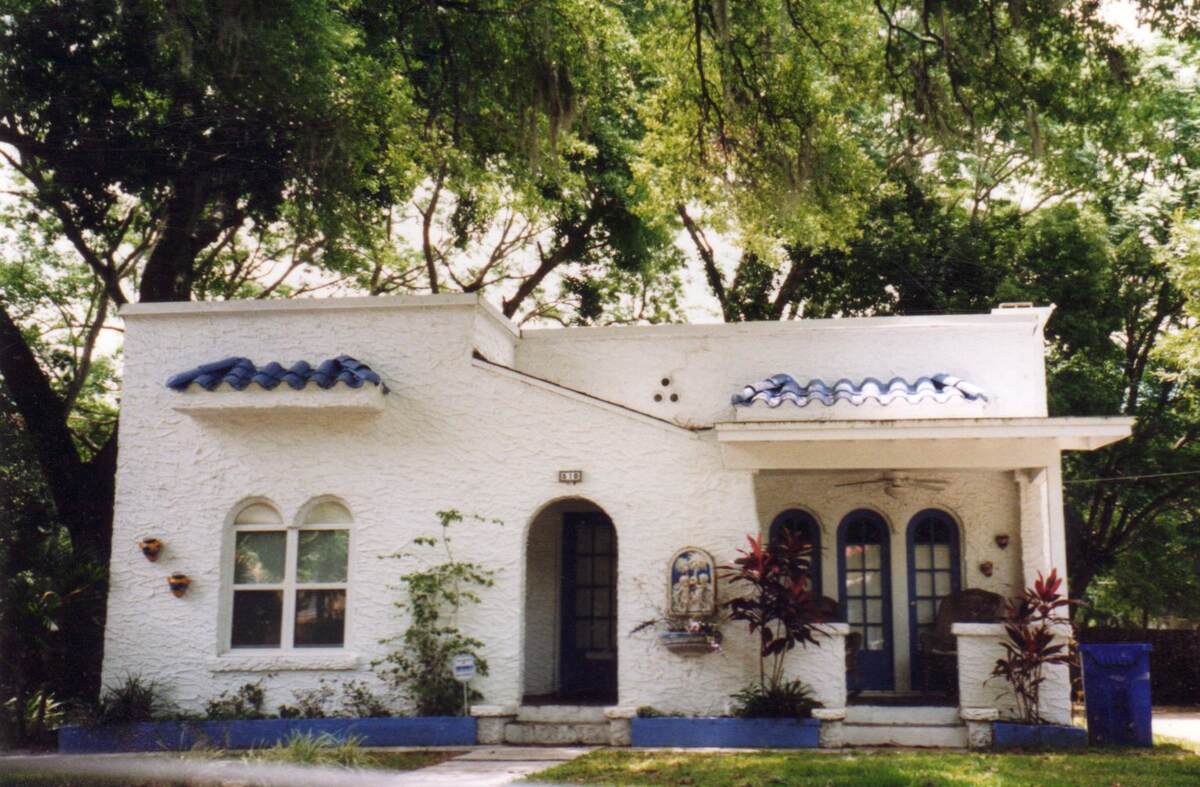
The growing zones in Florida range from the very warm Zone 11b in the Florida Keys to Zone 8b along the state’s northwest border with Alabama.
The USDA hardiness map separates the United States into different zones based on their average minimum winter temperature. Gardeners and farmers use this map to determine which plants can survive the winters in each zone. Here are the different zones in Florida:
- Map of Florida Growing Zones
- Zone 8b: Northwest Border with Alabama
- Zone 9a: The Panhandle and Most of Inland North Florida
- Zone 9b: Coastal North Florida Down to Central Florida
- Zone 10a: Central Florida and Parts of Inland South Florida
- Zone 10b: The Southwest Florida Coastline
- Zone 11a: Southeast Florida Coast
- Zone 11b: The Keys
- More Lawn Care and Landscaping Resources for Florida
Map of Florida Growing Zones
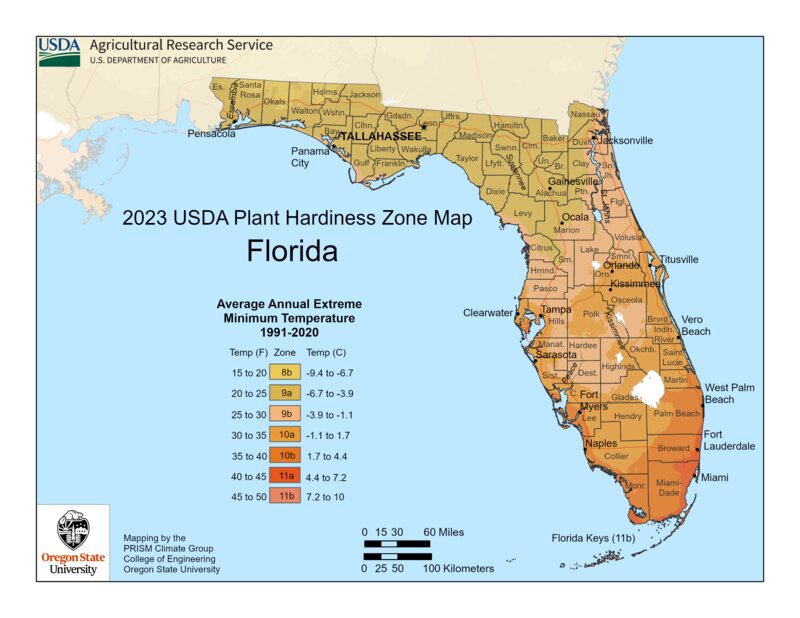
This map shows all of the growing zones you’ll find in the state of Florida. For more information on how to use it, read our article: “How to Use the Updated and Warmer USDA Hardiness Zone Map.” You also can learn about the zones of specific parts of Florida in these articles:
Zone 8b: Northwest Border with Alabama
8b is the smallest and most Northwest zone in Florida, comprising only a tiny area of the Panhandle bordering the state of Alabama. With an average minimum winter temperature of 15 to 20 degrees Fahrenheit, it’s also the coolest zone in Florida.
Since Florida’s Zone 8b is so small, it doesn’t fully encompass any counties. However, it does contain parts of several counties, namely Okaloosa, Holmes, Santa Rosa, Walton, and Escambia. 8b does not contain any major Florida cities.
Zone 9a: The Panhandle and Most of Inland North Florida
By contrast, 9a is the largest individual planting zone in Florida. It contains the rest of the Florida Panhandle and is Northern Florida’s main growing zone. 9a has an average minimum winter temperature of 20 to 25 degrees Fahrenheit.
Florida’s Zone 9a contains the remaining areas of the 8b counties, as well as many counties ranging from Jackson and Gulf counties to parts of Marion and Citrus. This zone contains several major cities: Gainesville, Ocala, Pensacola, parts of Panama City, and even Florida’s capital, Tallahassee.
Zone 9b: Coastal North Florida Down to Central Florida
Zone 9b is an oddly-shaped Florida growing zone. It runs along the coastlines and contains the remainder of Northern Florida, as well as being one of Central Florida’s prominent growing zones. At an average minimum winter temperature of 25 to 30 degrees Fahrenheit, 9b gets plenty of the famous Florida heat.
In terms of major cities, 9b contains only Jacksonville. It also at least partially contains counties as far North as Nassau and as far South as DeSoto. 9b’s odd hook-like shape means that completely containing counties is rare, but the zone is widespread all the same.
Zone 10a: Central Florida and Parts of Inland South Florida
Moving out of North Florida, zone 10a is another oddly-shaped zone that borders 9b and encompasses much of Central Florida, in addition to being one of the more prominent growing zones of South Florida. 10a has an average minimum winter temperature of 30 to 35 degrees Fahrenheit.
Like 9b, 10a runs along the coastline and forms a hook, which means that it contains more partial counties than full ones. This zone goes as far North as Volusia County and as far South as Collier. Zone 10a also contains several major cities, including big names like Tampa and Orlando in addition to Sarasota, Clearwater, Kissimmee, and Vero Beach.
Zone 10b: The Southwest Florida Coastline
Zone 10b is a smaller zone deep in the Florida South. It borders much of the Western coastline and parts of the East. This zone has an average minimum winter temperature of 40 to 45 degrees Fahrenheit, making it one of the hottest zones in the state.
Florida’s zone 10b contains the major cities Myers and West Palm Beach, as well as parts of the counties Monroe, Martin, Lee, Collier, Broward, Palm Beach, Broward, and Miami-Dade.
Zone 11a: Southeast Florida Coast
The zone 11a is another very small Florida growing zone, one that hugs the Southern coastline. 11a has a minimum average winter temperature of 45 to 50 degrees Fahrenheit, so it’s practically never cold enough to even be considered chilly.
In terms of major cities, zone 11a contains only Miami and Fort Lauderdale. This zone doesn’t fully contain any counties, but it does cross into parts of Miami-Dade, Brower, Monroe, and Palm Beach Counties.
Zone 11b: The Keys
The last and most Southern of Florida’s growing zones is zone 11b. Zone 11b has an average minimum winter temperature of 50 to 55 degrees Fahrenheit, making it the hottest zone in Florida and indeed one of the hottest on the USDA’s map.
This zone doesn’t contain any of the Florida mainland or any counties or major cities. 11b is reserved for the Florida Keys, a small island chain located off the Southern coast.
Check out our article on landscaping in Key West for ideas of what to do with your outdoor space.
More Lawn Care and Landscaping Resources for Florida
The growing zone you live in is far from the only factor when it comes to your lawn and garden. Check out some of our other articles for more information on Florida landscaping and lawn care:
What is Florida-Friendly Landscaping?
Florida-Friendly Landscaping Ideas
7 Best Grass Types for Florida Lawns
11 Hurricane-Resistant Landscaping Ideas for Florida
The Best Lawn Fertilization Schedule and Tips for Florida
11 Essential Lawn Watering Tips for Florida
10 Winter Lawn Care Tips for Florida
How to Get Rid of Florida Lawn Pests
Find a Lawn Care Pro
Whether you’re in Miami, Fort Lauderdale, Tampa, or Hollywood, knowing your specific zone helps you pick the perfect plants for your space. You don’t want to waste time, money, and energy trying to grow something that will die once winter hits.
If you need help with your Florida lawn, contact a Florida landscaping professional near you. They can take care of mowing your grass for you so that you don’t have to worry about it.
Main Image Credit: Tina Sibley / Flickr / CC BY 2.0
